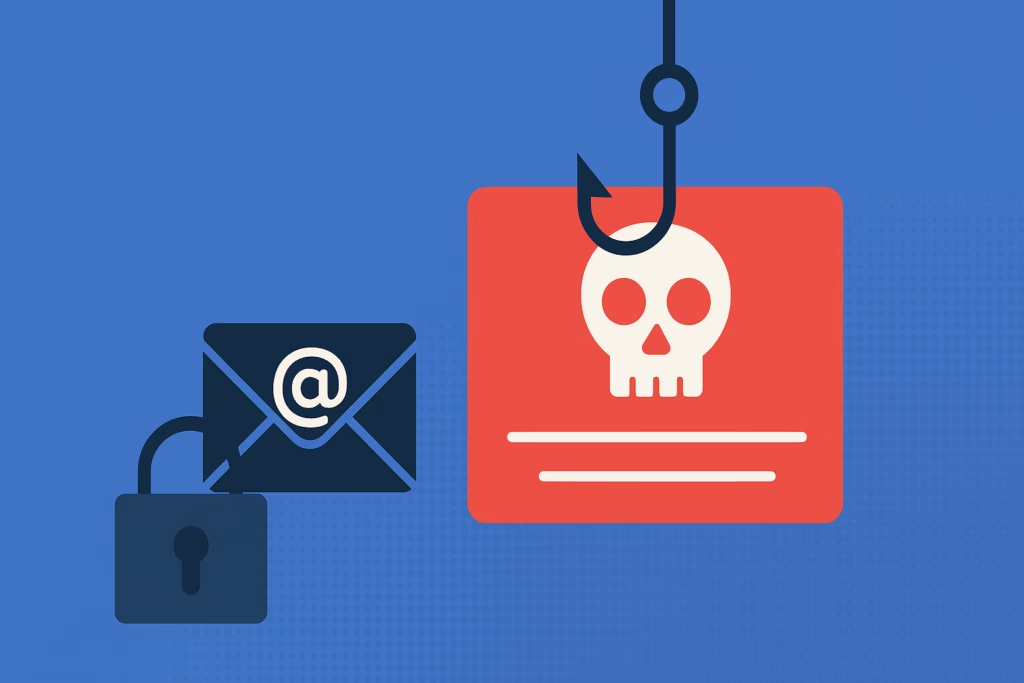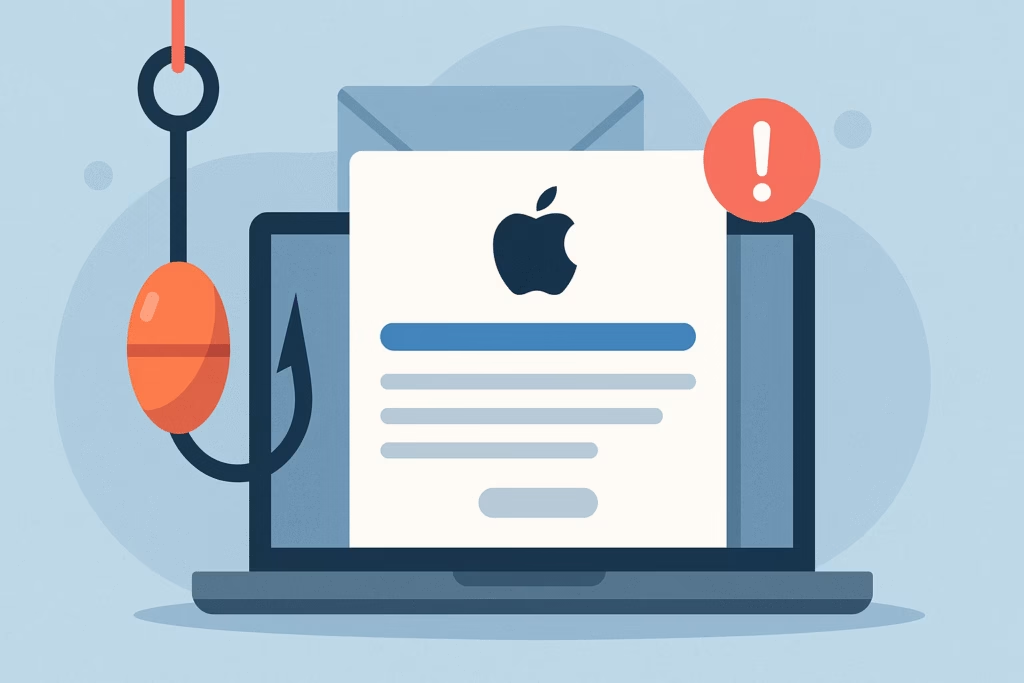
Cybercriminals have mastered the art of combining multiple attack vectors to maximize their success rates and financial gains. The connection between phishing and ransomware represents one of the most devastating cybersecurity threats facing organizations today. Understanding this dangerous relationship is crucial for protecting your business from attacks that can result in millions of dollars in losses and months of operational disruption.
Ransomware attacks have surged by over 400% since 2020, with FBI data showing that ransomware complaints increased dramatically across all sectors. What makes these statistics even more alarming is that approximately 90% of successful ransomware attacks begin with a phishing email, creating a direct pipeline from deceptive messages to encrypted systems and ransom demands.
How Phishing Enables Ransomware Attacks
Phishing serves as the primary delivery mechanism for ransomware because it exploits the human element – often the weakest link in cybersecurity defenses. Unlike technical vulnerabilities that can be patched, human psychology remains consistently exploitable through social engineering techniques.
The Initial Compromise
Ransomware phishing attacks typically follow a predictable pattern. Cybercriminals send carefully crafted emails designed to appear legitimate, often impersonating trusted entities like banks, government agencies, or well-known companies. These messages contain malicious attachments or links that, when activated, begin the ransomware infection process.
The sophistication of these phishing campaigns has evolved significantly. Modern ransomware phishing emails often include:
- Personalized information gathered from data breaches
- Professional formatting that mirrors legitimate communications
- Urgent language designed to bypass critical thinking
- Legitimate-looking sender addresses through email spoofing
- Contextually relevant content based on current events or business operations
Malware Delivery Methods
The transition from phishing to ransomware deployment occurs through several common vectors. Understanding these delivery methods helps organizations implement targeted defenses against malware phishing attacks.
Malicious Attachments: Cybercriminals frequently attach files containing ransomware payloads to phishing emails. These attachments often masquerade as invoices, shipping notifications, or important documents requiring immediate attention. Once opened, the malware begins encrypting files across the network.
Compromised Links: Phishing emails containing links to malicious websites represent another primary attack vector. These sites either directly download ransomware onto victims’ systems or redirect users to exploit kits that identify and abuse system vulnerabilities.
Credential Harvesting: Some phishing campaigns focus on stealing login credentials rather than directly deploying ransomware. Attackers use these stolen credentials to gain legitimate access to systems, allowing them to deploy ransomware manually while avoiding detection mechanisms designed to catch automated attacks.
Common Ransomware Phishing Tactics
Successful ransomware groups employ sophisticated phishing strategies that have evolved to counter traditional security awareness training. Recognizing these tactics provides the foundation for effective defense strategies.
Business Email Compromise (BEC)
Advanced persistent threat groups often begin ransomware campaigns with targeted BEC attacks. These involve compromising legitimate business email accounts to send internal phishing messages that appear to come from trusted colleagues or executives. The inherent trust employees place in internal communications makes these attacks particularly effective.
A notable example occurred in 2021 when the Conti ransomware group used BEC techniques to infiltrate organizations before deploying their encryption payload. The attackers spent weeks studying internal communications to craft convincing phishing messages that bypassed security controls.
Supply Chain Phishing
Ransomware operators increasingly target managed service providers and software vendors to reach multiple victims simultaneously. These supply chain attacks begin with phishing campaigns against technology partners, allowing attackers to leverage trusted relationships and distribute malware through legitimate communication channels.
Multi-Stage Attack Sequences
Modern ransomware phishing campaigns often involve multiple stages designed to establish persistence and avoid detection. The initial phishing email may deploy relatively benign malware that conducts reconnaissance and downloads additional payloads over time. This approach allows attackers to adapt their tactics based on the target environment and maintain access even if initial detection occurs.
Real-World Impact and Case Studies
The financial and operational consequences of successful phishing ransomware attacks extend far beyond immediate ransom payments. Organizations face extended downtime, data recovery costs, regulatory fines, and lasting reputational damage.
Colonial Pipeline Attack
The Colonial Pipeline ransomware attack demonstrated how phishing-enabled attacks can impact critical infrastructure. The DarkSide ransomware group gained initial access through compromised credentials, likely obtained through previous phishing campaigns. The attack shut down the largest fuel pipeline system in the United States for six days, causing widespread fuel shortages and economic disruption.
Healthcare Sector Vulnerabilities
Healthcare organizations face particular risks from ransomware phishing attacks due to their reliance on interconnected systems and the life-critical nature of their operations. The Department of Health and Human Services reported that ransomware attacks against healthcare providers increased by 123% between 2018 and 2021, with most beginning through phishing emails targeting busy medical professionals.
Advanced Detection and Prevention Strategies
Protecting against phishing ransomware requires a multi-layered approach that addresses both technical vulnerabilities and human factors. Effective defense strategies must evolve continuously to counter increasingly sophisticated attack methods.
Email Security Controls
Implementing robust email security measures provides the first line of defense against ransomware phishing attacks. Organizations should deploy:
- Advanced Threat Protection: Email security solutions that use machine learning and behavioral analysis to identify suspicious messages
- Sender Authentication: SPF, DKIM, and DMARC protocols to verify email authenticity and prevent spoofing
- Attachment Sandboxing: Isolated environments for testing suspicious attachments before delivery
- URL Filtering: Real-time analysis of links to identify and block malicious destinations
User Education and Awareness
Technical controls alone cannot prevent all phishing attempts from reaching users. Comprehensive security awareness training must address the evolving tactics used in ransomware phishing campaigns. Effective training programs should include:
- Regular simulated phishing exercises that mirror current attack trends
- Immediate feedback and additional training for users who fall for simulations
- Clear reporting procedures for suspicious emails
- Regular updates covering new phishing techniques and ransomware trends
Incident Response Planning
Organizations must assume that some phishing attempts will succeed despite preventive measures. Effective incident response planning can significantly reduce the impact of successful attacks by enabling rapid detection, containment, and recovery.
Key elements of ransomware incident response include:
- Automated system isolation procedures to prevent lateral movement
- Regular backup testing and offline storage protocols
- Communication templates for internal and external stakeholders
- Legal and regulatory compliance procedures
- Recovery prioritization frameworks based on business criticality
Emerging Threats and Future Considerations
The relationship between phishing and ransomware continues evolving as cybercriminals adopt new technologies and tactics. Organizations must stay informed about emerging threats to maintain effective defenses.
AI-Enhanced Phishing
Artificial intelligence tools are enabling more sophisticated phishing campaigns that can generate personalized content at scale. These AI-enhanced attacks can create convincing emails tailored to specific individuals or organizations, making traditional detection methods less effective.
Mobile and Cloud Targeting
As organizations increasingly adopt mobile and cloud technologies, ransomware groups are adapting their phishing tactics to target these environments. Mobile phishing attacks often use SMS or messaging apps to deliver malware, while cloud-focused attacks target collaboration platforms and file-sharing services.
Building Comprehensive Defense Systems
Effective protection against ransomware phishing requires integrating multiple security layers and maintaining continuous vigilance. Organizations should regularly assess their security posture and update defenses based on evolving threat landscapes.
Advanced threat protection services like PhishDef provide specialized defenses against sophisticated phishing campaigns that precede ransomware attacks. By combining AI-powered email analysis, real-time threat intelligence, and user behavior monitoring, comprehensive security platforms can identify and block ransomware delivery attempts before they reach end users.
Key Takeaways
The connection between phishing and ransomware represents a critical security concern that requires immediate attention from organizations across all sectors. Key points to remember include:
- Phishing serves as the primary delivery mechanism for approximately 90% of ransomware attacks
- Modern attacks use sophisticated social engineering techniques that can bypass traditional security awareness training
- Multi-layered defense strategies combining technical controls and user education provide the most effective protection
- Incident response planning is essential for minimizing the impact of successful attacks
- Emerging technologies like AI are enabling more sophisticated attack methods that require updated defense strategies
The financial and operational risks associated with ransomware attacks make prevention a critical business priority. Organizations that fail to implement comprehensive defenses against phishing ransomware face potentially devastating consequences that can threaten their continued viability.
Don’t wait until a phishing email delivers ransomware to your network. Protect your organization with PhishDef’s advanced email security platform, designed specifically to detect and block sophisticated phishing campaigns before they can deploy malicious payloads. Contact our security experts today to learn how comprehensive phishing protection can safeguard your business from ransomware attacks and ensure business continuity in an increasingly dangerous threat landscape.


